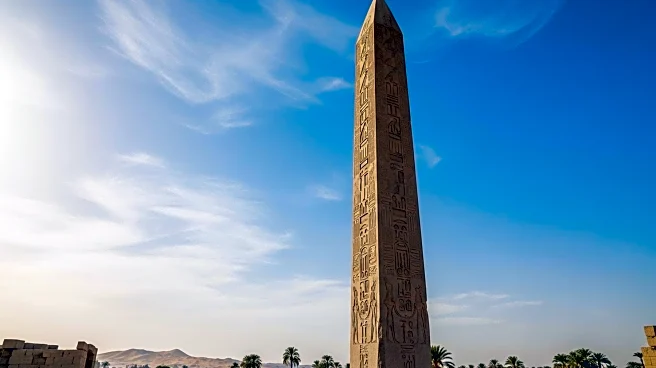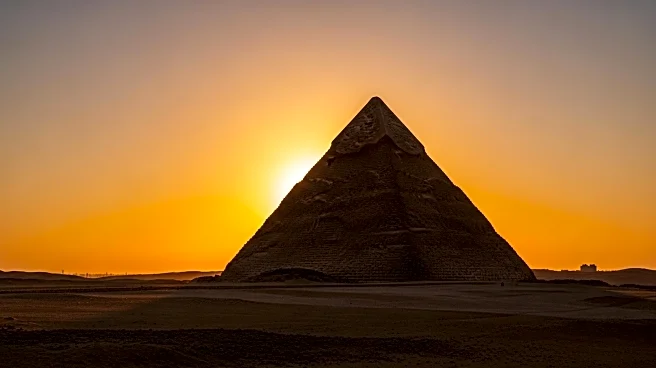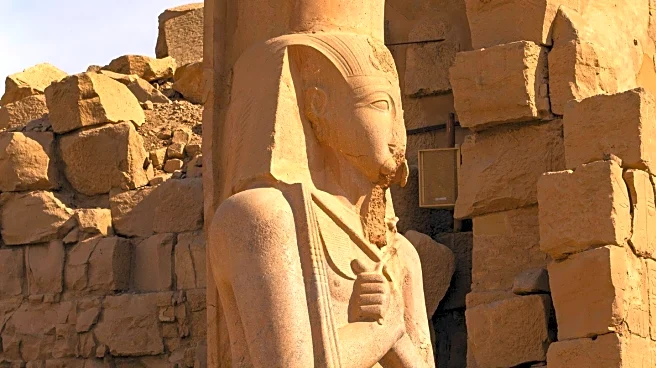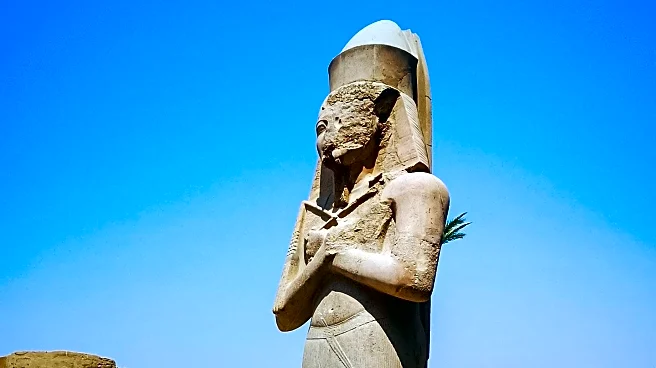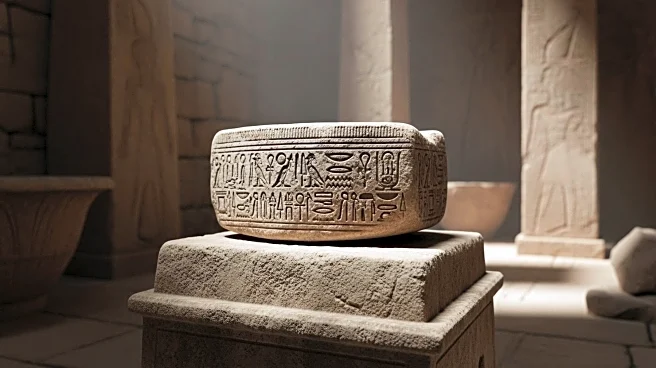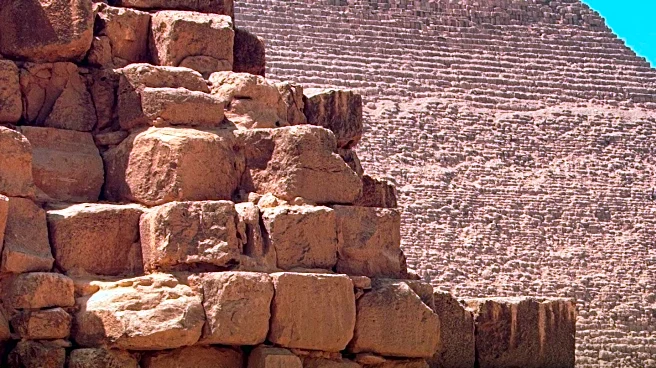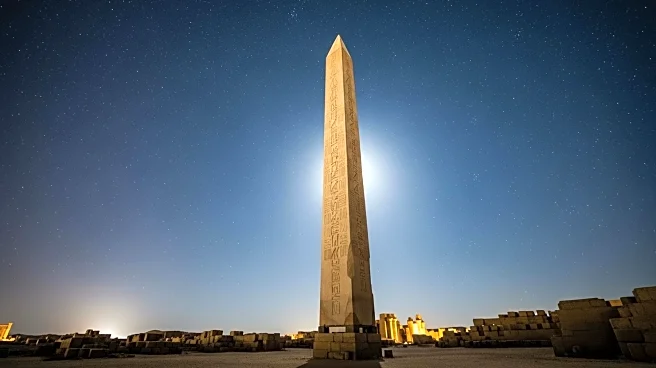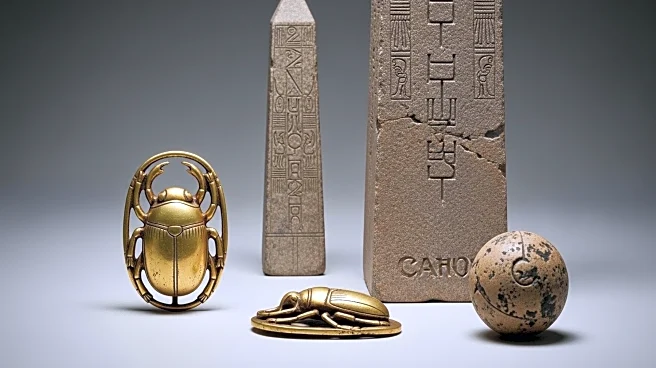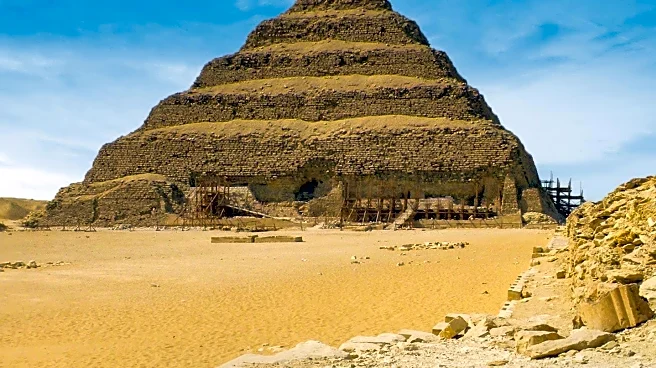What is the story about?
What's Happening?
An international team of researchers has conducted a comprehensive geoarchaeological survey at the Karnak Temple complex in Luxor, Egypt, to determine the site's earliest occupation. The study involved drawing over 60 sediment cores from various locations within Karnak, some reaching depths of nearly 40 feet. These cores were analyzed alongside thousands of ceramic fragments to establish a timeline for the site's history. The findings suggest that before 2520 B.C.E., the area was unsuitable for permanent structures due to flooding from the Nile. The earliest occupation likely occurred during the Old Kingdom, around 2700 B.C.E. to 2200 B.C.E., supported by ceramic fragments dated between 2300 B.C.E. and 1980 B.C.E. The research indicates that Karnak was built on a fluvial terrace surrounded by river channels, forming an island configuration. This landscape change was dramatic, with occupants responding both opportunistically and proactively.
Why It's Important?
The discovery of the origins of the Karnak Temple complex provides significant insights into ancient Egyptian civilization and its relationship with the natural environment. Understanding the site's historical context helps archaeologists and historians piece together the development of religious and cultural practices in ancient Egypt. The connection between the temple's location and the creation myth of the primeval mound rising from watery chaos highlights the interplay between human action, natural environment, and religious beliefs. This research not only enriches the historical narrative of Egypt but also offers a model for studying other ancient sites with similar environmental and cultural dynamics.
What's Next?
Further archaeological excavations and studies are likely to continue at Karnak to uncover more artifacts and refine the timeline of the site's occupation. Researchers may also explore other areas within the Theban region to understand the broader historical and cultural significance of the Karnak Temple complex. The findings could lead to new interpretations of ancient Egyptian religious practices and their connection to environmental changes. Additionally, the study may inspire similar geoarchaeological surveys at other historical sites worldwide, enhancing our understanding of ancient civilizations.
Beyond the Headlines
The research at Karnak Temple complex underscores the importance of geoarchaeology in uncovering historical truths. It highlights how environmental factors influenced the development of ancient societies and their religious practices. The study also raises questions about how ancient Egyptians adapted to and manipulated their environment to suit their cultural and religious needs. This approach could lead to a deeper understanding of the ethical and cultural dimensions of site selection and construction in ancient times.
AI Generated Content
Do you find this article useful?
